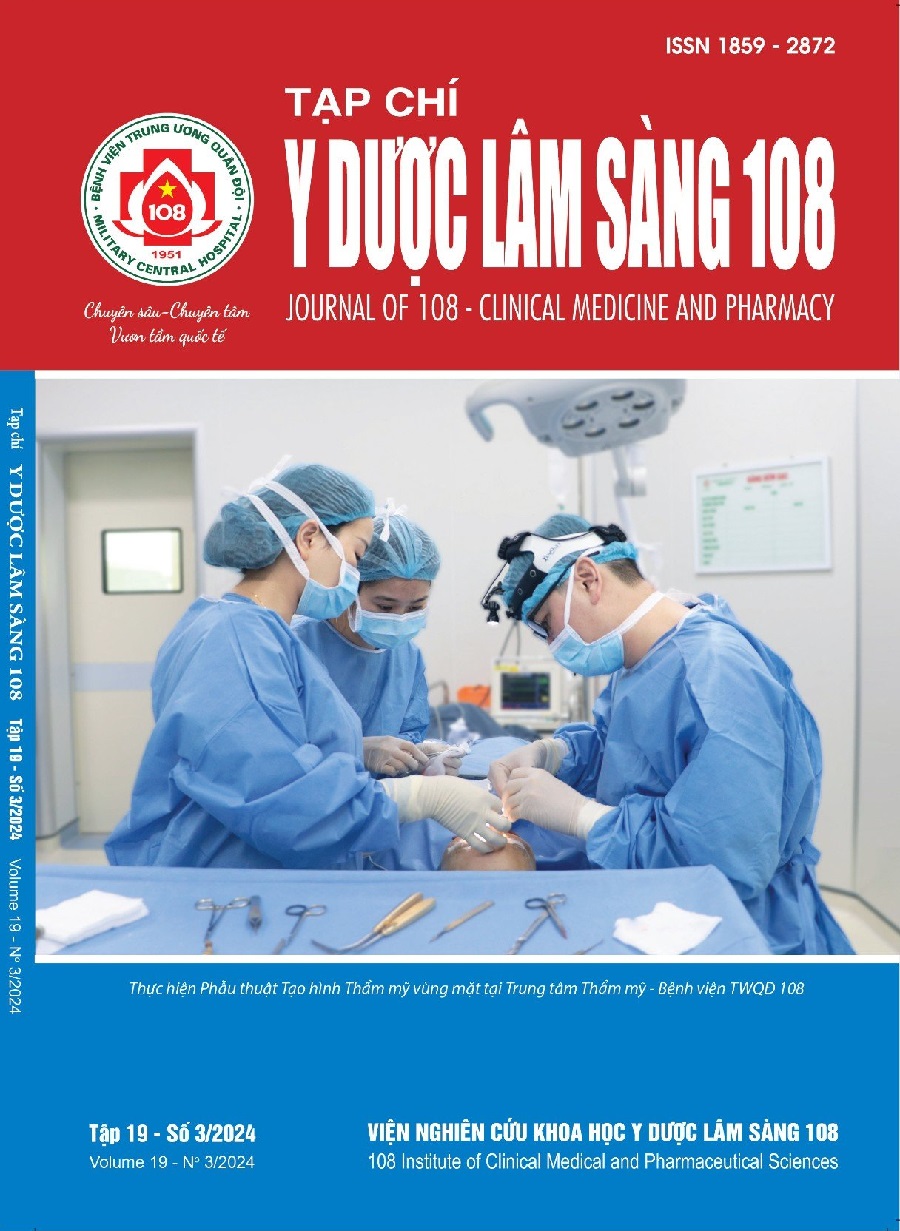Comparing the efficacy of treating fungal finger nail infection with oral daily dose and pulse dose of terbina fineat at the National Hospital of Dermatology & Venereology
Main Article Content
Keywords
Abstract
Objective: To compare the efficacy of treating fungal finger nail infection with oral daily dose and pulse dose of terbinafine. Subject and method: A prospective study, randomized controlled trial. There were 60 patients with fungal finger nail infection divided into two groups. Group 1 included 30 patients (18 men, 12 women) treated with oral terbinafine 250mg/day for 12 weeks. Group 2 included 30 patients (17 men, 13 women) treated with oral terbinafine 500mg/day ´ 1 week every 4 weeks for 12 weeks. Patients in both groups received oral liver tonic and topical nilocin. Patients were assessed the severity of the disease and the level of improvement in clinical symptoms at week 4, 8 and 12. Result: After 12 weeks of treatment with daily doses of terbinafine, the proportion of patients obtained subclinical clearance was 90% and clinical clearance was 66.7%. Meanwhile, this rate in the terbinafine pulse dose group was 83.3% and 56.7%, respectively, but the difference was not statistically significant. Adverse effects of terbinafine were mild and rare, which was observed in 3.3% of the daily group and 6.7% of the pulse dose group. Then main adverse effects were gastrointestinal symptoms and headaches which resolved without treatment.
Article Details
References
2. Nguyễn Thị Đào và Nguyễn Đức Thảo (1978) Bóc tách móng bằng Ure-plaste kết hợp với Griseofulvine trong điều trị nấm móng. Nội san da liễu 89(4), tr. 45-50.
3. Lê Hữu Doanh (2017) Các bệnh nấm nông. Bệnh học Da liễu 1, Nhà xuất bản Y học, tr. 287-306.
4. Ameen M, Lear JT, Madan V et al (2014) British Association of Dermatologists' guidelines for the management of onychomycosis. Br J Dermatol 171(5): 937-958.
5. Grover C, Bansal S, Nanda S et al (2007) Combination of surgical avulsion and topical therapy for single nail onychomycosis: A randomized controlled trial. Br J Dermatol 157(2): 364-368.
6. Carney C, Tosti A, Daniel R et al (2011) A new classification system for grading the severity of onychomycosis: Onychomycosis Severity Index. Arch Dermatol 147(11): 1277-1282.
7. Darkes MJM, Scott LJ, Goa KL (2003) Terbinafine: A review of its use in onychomycosis in adults. Am J Clin Dermatol 4: 39-65.
8. Hassan HM, Osman AM and El-Moselhy EA (2008) The treatment of onychomycosis by oral terbinafine: the efficacy and adverse events. The Egyptian J of Hospital Medicine 30: 70-77.
9. Tosti A, Piraccini BM, Stinchi C (1996) Treatment of dermatophyte nail infections: an open randomized study comparing intermittent terbinafine therapy with continuous terbinafine treatment and intermittent itraconazole therapy. J Am Acad Dermatol 34(4): 595-600.
10. Pavlotsky F, Armoni G, Shemer A (2004) Pulsed versus continuous terbinafine dosing in the treatment of dermatophyte onychomycosis. J Dermatolog Treat 15(5): 315-320.
11. Gupta AK, Paquet M, Simpson F, Tavakkol A (2013) Terbinafine in the treatment of dermatophyte toenail onychomycosis: A meta-analysis of efficacy for continuous and intermittent regimens. J Eur Acad Dermatol Venereol 27: 267-272.
12. Gupta AK, Ryder JE, Lynch LE, Tavakkol A (2005) The use of terbinafine in the treatment of onychomycosis in adults and special populations: A review of the evidence. J Drugs Dermatol 4: 302-308.
 ISSN: 1859 - 2872
ISSN: 1859 - 2872
